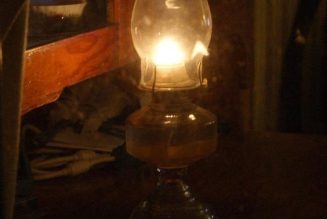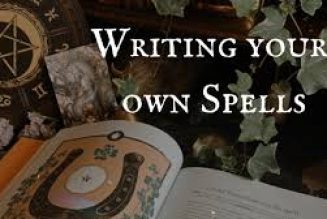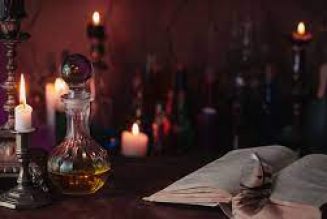In medieval times, there were possibly many issues, political, religious, and otherwise, that brought about the persecution of witches.
Amongst other things, These issues included the religious emphasis on the sin of Eve and the belief in the inferiority of women.
The belief in the inferiority of women had existed since the time of St Paul.
With the rise of an organized male medical profession, women healers who had acted as herbalists and midwives were seen as a threat.
This was not least because their skills ensured less painful childbirth, which was considered contrary to the curse of God that the daughters of Eve should bear children in sorrow.
So midwives were a prime target for the new persecutions and were often accused of sacrificing babies to the Devil.
Given the high rate of infant mortality, this allegation was hard to refute.
A grieving mother might easily blame the midwife for the death of her infant.
At a time of appropriation of common land and the enclosure of smallholdings, accusations of witchcraft were a popular way of removing peasants.
This could be particularly true for elderly widows or spinsters, reluctant to give up their land rights.
Being found guilty of witchcraft carried the penalty of the seizure of land.
Some researchers have suggested that as late as 1693 in Salem, Massachusetts, the desire to appropriate land was behind at least some of the mass accusations of witchcraft made at the time.
One landowner, Giles Corey, was apparently an innocent witness at the trials at first.
However, he himself was accused of witchcraft and was pressed to death –
This was a torture where heavy stones were placed on the victim’s chest, which took up to three days to kill them
High-ranking practitioners of magick who attempted to conjure demons were usually male and included both popes and royalty.
They generally escaped censure, however.
The folk religion of the countryside was an easier target.
In December 1484, the Bull of Pope Innocent VII was published, appointing Heinrich Kramer and Jakob Sprenger as inquisitors against witchcraft and heresy.
These two clerics wrote the Malleus Maleficarum, the notorious Hammer of the Witches, which described in lurid detail the tortures that
could be used to obtain confessions from suspected witches.
In it, they adopted the policy that it was better to kill an innocent person who would be rewarded in heaven by God than to allow a guilty
person to remain unpunished.
This book became the bestseller of its time and was quoted to justify the atrocities practiced against witches in mainland Europe and Scandinavia.
Although torture to obtain a confession was not permitted in England except by royal assent, many inquisitors were very cruel even to young victims, who would eventually confess in the hope of having their interrogation brought to an end.
No one really knows how many people have been put to death for witchcraft.
The worst period for witch burnings and hangings in Europe was between the mid-fifteenth and late seventeenth centuries when the number judicially executed as witches during this period is generally accepted to be about a quarter of a million people.
In addition, many more were lynched or hanged unofficially by mobs eager to find a scapegoat to blame for bad harvests or dying cattle.
This unhappy era came to be known as the Burning Times. Matthew Hopkins, who died in 1647, brought about the executions of at least 236 accused witches.
He styled himself as Witchfinder General and, with four hired assistants, instigated a reign of torture and terror especially in the eastern counties of England, amassing a huge fortune for himself in the process.
In the colonies of America, the most notorious trials were those at Salem, held between 1692 and 1693.
During this period of mass hysteria, 141 people from the town and immediate area were arrested, and 19 were hanged.
Even a dog was hanged.
Dorcas Good, a four-year-old child, was the youngest victim to be accused of witchcraft and imprisoned.
She was released on bail after her mother was hanged, but her younger sibling died in prison.
Dorcas was driven insane by her experience.
About three-quarters of all those killed as witches in Europe and Scandinavia were women, mainly lower-class older women, female healers, village herbalists, wise women, and midwives.
With the death of so many experienced healers and wise women, much knowledge was inevitably lost, and for a time infant mortality increased as male physicians took over the roles of the deposed midwives.
But anyone who was different in any way – eccentric, senile, or physically deformed – could be accused.
Any old woman living alone might be blamed for the deaths of animals, the failure of crops, and outbreaks of disease that were in reality caused by poor hygiene and diet, bad weather, human neglect, or simply blind Fate.
Of course, this occurred to some extent before the Burning Times.
The difference was that now the Church and State were legalizing and even encouraging this persecution.
Even faeries became associated with witchcraft.
The Bean-Tighe, a faerie housekeeper, popular in the mythology of Ireland and Scotland, was said to reside with the village wise woman and assist her with chores; in the worst of the wave of hysteria over witchcraft, if an old woman had an immaculate house, it was claimed she
had faerie help – and so by implication was consorting with the Devil.
Under torture, even the innocent would admit to the vile deeds suggested by their inquisitors.
Many of the confessions now appear to be remarkably uniform and come straight from the pages of the works on demonology, with which the members of the Inquisition would be familiar.
Simple village circle dances performed at the time of the full moon and the old rituals performed to bring fertility to both fields and people – with a figure dressed as the Horned God and couples making love in the fields or leaping over a bonfire – became all too easily translatable into evidence of satanic covens.
Although the last person executed for witchcraft in England was Alice Molland at Exeter in 1712, it was not until 1951 that the Witchcraft Act of 1736 was repealed and replaced with the Fraudulent Mediums Act.
Those who continued to practice the ‘old ways’ were usually families who could be trusted not to betray the secrets, although the fires of the Lughnassadh (the first corn harvest) continued in remote areas until well into the late nineteenth century and are being revived by pagans as community celebrations, especially in the USA.
The secret family covens would pass the traditions down through the matriarchal line, usually by word of mouth.
Those who could write recorded their spells and rituals in ‘Books of Shadows’ – so-called partly because of the secrecy required to write and protect them.
These were usually buried or burned with the witch on her death, or on rare occasions were handed on to the eldest daughter.








